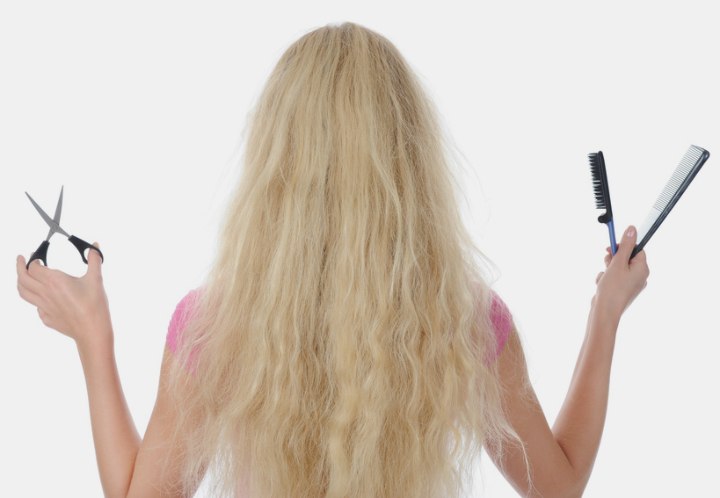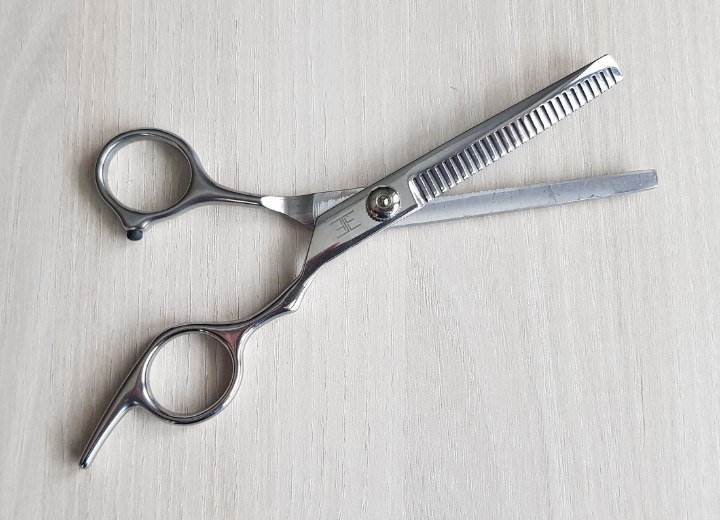Pyramid Effect

I’ve heard that instead of trimming straight across, I can "round" the bottom to reduce the pyramid shape. What is this technique called, and does it actually work? If not, do you have any other specific suggestions for avoiding bulk without layers?
A: The pyramid effect is a common challenge for those with long, curly, or wavy hair, especially when cut bluntly. The good news is that there are several effective methods to reduce bulk and create a more balanced shape, without resorting to traditional layering.
1. Beveling (Rounding the Ends) - This involves cutting the hair at a slight downward angle rather than straight across. While this is technically a very subtle form of layering, it’s much more controlled and minimal than traditional layered cuts. The angle of the bevel can be adjusted based on your hair’s curl pattern, density, and texture. The "rounding" method you mentioned is a variation of beveling, where the angle follows a gentle curve rather than a straight diagonal, helping the hair fall more naturally.
2. Undercutting - This technique removes bulk by cutting the hair underneath much shorter (sometimes even close to the scalp) while leaving the top layers longer. This creates a uniform shape while maintaining the appearance of fullness on top. It’s a popular choice for those who want versatility, allowing hair to look smooth when straightened or voluminous when curly. However, undercutting is a more dramatic approach, so it’s best for those comfortable with a bold change.
3. Thinning/Texturizing with Shears - Many stylists prefer this method because it removes bulk in a diffused, natural-looking way. Instead of cutting straight across or at an angle, thinning shears are used to selectively remove hair at the mid-lengths and ends. This breaks up thick sections without creating obvious layers, allowing curls to clump together organically.

1. Be Specific About What You Want and Don’t Want - If you dislike traditional layers, say so explicitly. If you prefer a softer, rounded shape rather than sharp angles, describe that. Mention whether you want to maintain as much length as possible while just reducing bulk.
2. Bring Visual References - Even if you explain well, showing pictures of hairstyles you like (and dislike) helps your stylist visualize your ideal look.
3. Ask About Their Experience with Curly Hair - Not all stylists are equally skilled in cutting curly textures. If possible, seek someone who specializes in curly hair or has experience with the techniques mentioned above.
The pyramid effect is fixable. You just need the right cutting method. Beveling (rounding) is a great starting point, but if that doesn’t give enough reduction, thinning shears or slight undercutting may help. The key is working with a stylist who listens and adjusts the technique to your hair’s unique needs.
©Hairfinder.com
See also:
Curly hair and hairstyles
Are layers something people with curly hair shouldn't get?